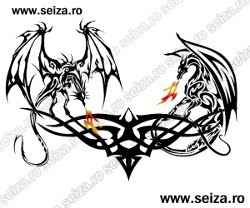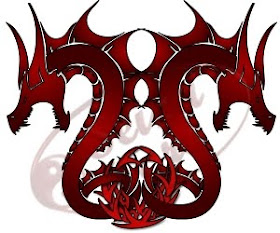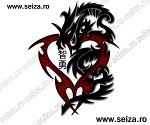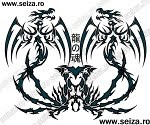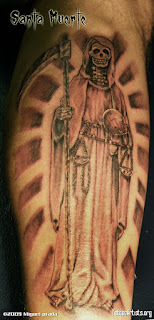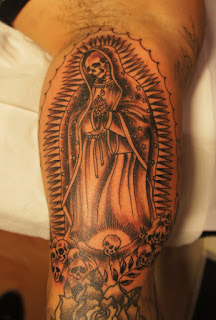A Grim Reaper tattoo design is often combined with a variety of other design elements in order to make a truly unique tattoo design. The number of these design-elements is very large (up to several hundreds) and for this reason even their mere enumeration is an extremely difficult task. In this post I will attempt a brief overview of the most popular elements which can be seen in a Death tattoo.
1. Skulls and skeletons are probably the most common elements which can occur in a Death tattoo; sometimes Death himself / herself is depicted as a skeleton carrying a scythe. Anyway, a skull tattoo can have a different meaning than a Grim Reaper tattoo: triumph, anarchy, white race supremacy, etc (read more here).
 Grim Reaper holding a human skull
Grim Reaper holding a human skull
2. Symbols of the inexorable flow of time: hourglasses, watches, sundials, old pendulum clocks, timepieces, horologes, etc.
 Death tattoo - Grim Reaper holding an watch - a symbol of the inexorable flow of time
Death tattoo - Grim Reaper holding an watch - a symbol of the inexorable flow of time
3. Objects related to the culture of death: crosses (especially gothic and celtic crosses), candles, and tombstones.
4. Animals: the Death's horse, the Black Dog, Cerberus, venomous snakes, birds which are usually seen as bad omens that foretell of death like ravens and crows, some insects (especially the moths).
 Death riding his / her horse
Death riding his / her horse
5. Weapons: the most common is, of course, the famous Grim Reaper scythe, but many other weapons appear as well: swords, spears, lances, javelins, knives, daggers and even modern guns
 gangsta tattoo: Death holding a gun
gangsta tattoo: Death holding a gun
6. Objects related to magic and alchimy: orbs, magic compasses, magic crystal ball (a reminder of the fact that Death can see every single corner of the world), the five pointed star, old magic books or papyruses.
 Grim Reaper holding a magic orb
Grim Reaper holding a magic orb
7. Latin maxims and aphorisms: Memento Mori (Remember your mortality, Remember you must die or Remember you will die), Sic Transit Gloria Mundi (Thus passes the glory of the world), Carpe Diem (Seize the day), Ubi sunt...? (Where are...?) or Ubi nunc...? (Where now...?) - both of them are shortened variants of the Ubi sunt qui ante nos fuerunt? Where are those who were before us?)
 Dance of Death tattoo
Dance of Death tattoo
8. Fate-symbols: dices, playing cards, Tarot cards
 Death tattoo: Grim Reaper playing dices (probably the stake of the game is someone's life)
Death tattoo: Grim Reaper playing dices (probably the stake of the game is someone's life)
 Death tattoo: Death depicted on a playing card. If yoy like this tattoo design you can find it in a larger format (600 x 500 px) on my website, www.seiza.ro
Death tattoo: Death depicted on a playing card. If yoy like this tattoo design you can find it in a larger format (600 x 500 px) on my website, www.seiza.ro
9. Symbols of power: thrones, highly decorated swords, chains, royal crowns, rings, lightning strokes
10. Nature elements (these elements occur especially in the large tattoos): dead trees (very common in a Death tattoo), the Moon, mist, clouds, dark waters, swamps, lightning strokes
 dead trees are a very common element in the Grim Reaper tattoos
dead trees are a very common element in the Grim Reaper tattoos
11. Elements associated with the Underworld / Hell: flames (the flames of Hell), thrones decorated with human skulls and bones, demons and monsters, the five pointed star. These elements occur very frequent in the so-called satanic tattoos
12. Other elements: handlamps (used to see in the dark), flowers (the symbol of ephemerality), hearts, scales (as a symbol of equity, justice and impartiality, as well as a symbol of the divine will).
















